Capybara: Fun Facts About the World’s Largest Rodent
Meet the Capybara
Meet the capybara — the gentle giant of the rodent world. Known for their calm personalities, quirky habits, and surprising adaptations, capybaras are the largest rodents on Earth. From their South American wetlands to their fame in Japanese hot springs, these fascinating animals have captured hearts all over the globe.
Capybaras may resemble oversized guinea pigs, but they are unique in the animal kingdom. They are about 4 feet long, 2 feet tall, and weigh between 70–150 pounds. Despite their size, their gentle personalities have made them beloved animals worldwide.
Their calm and tolerant nature often leads them to form bonds with other species — capybaras have been seen resting with birds on their backs, lounging with cats, and even sharing space with dogs and monkeys. This unusual friendliness has made them social media stars and symbols of peaceable living.
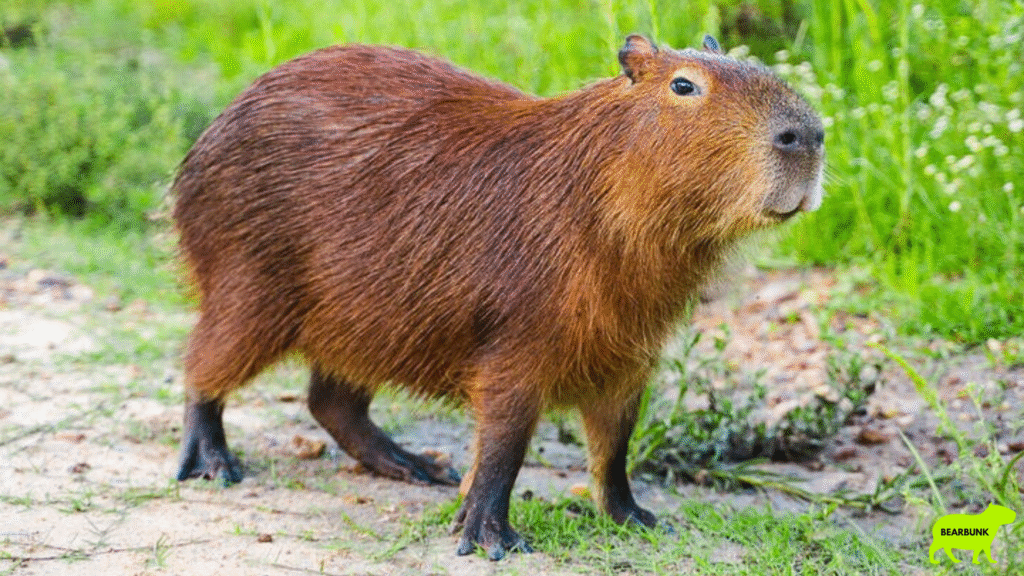
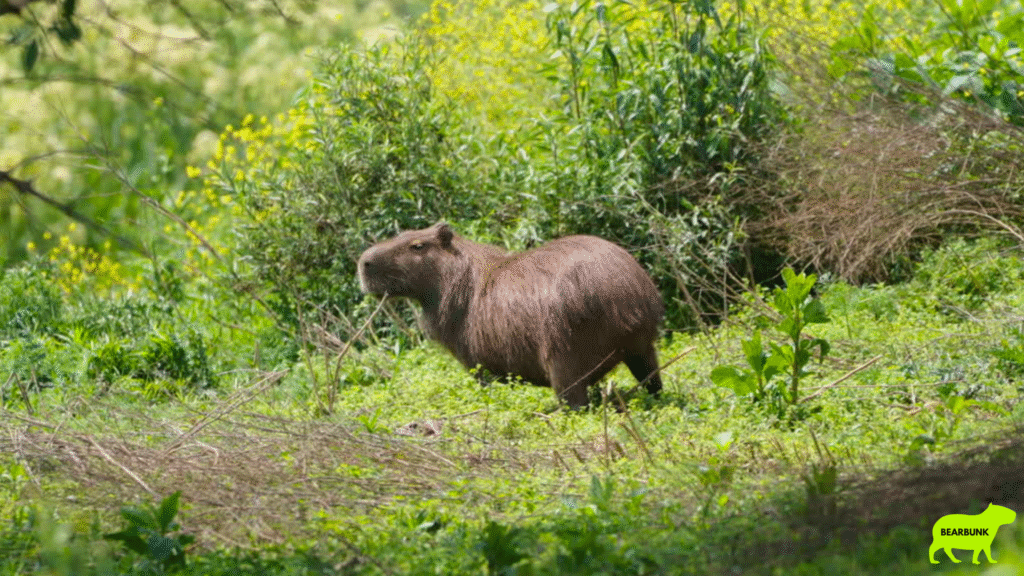
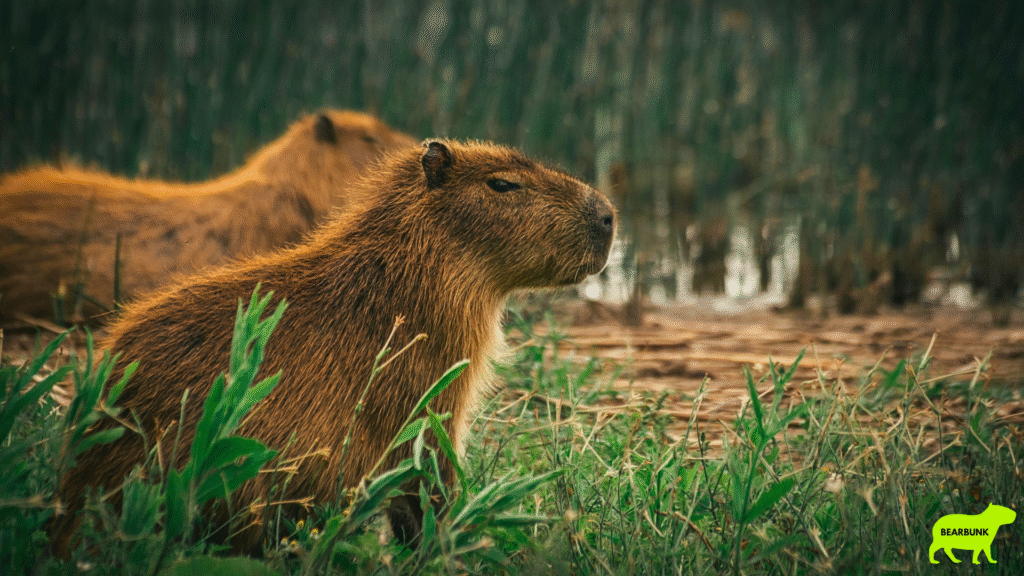
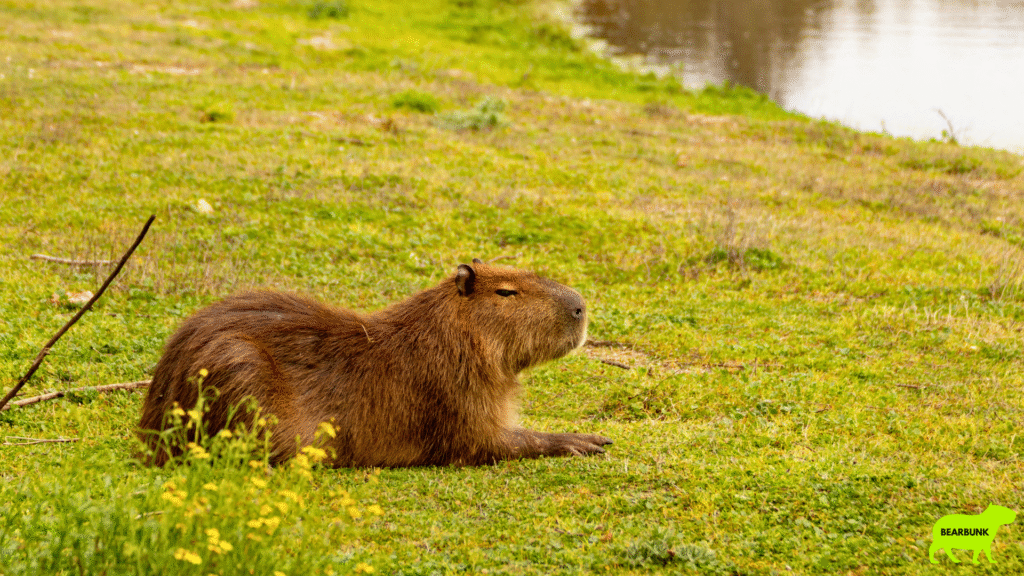
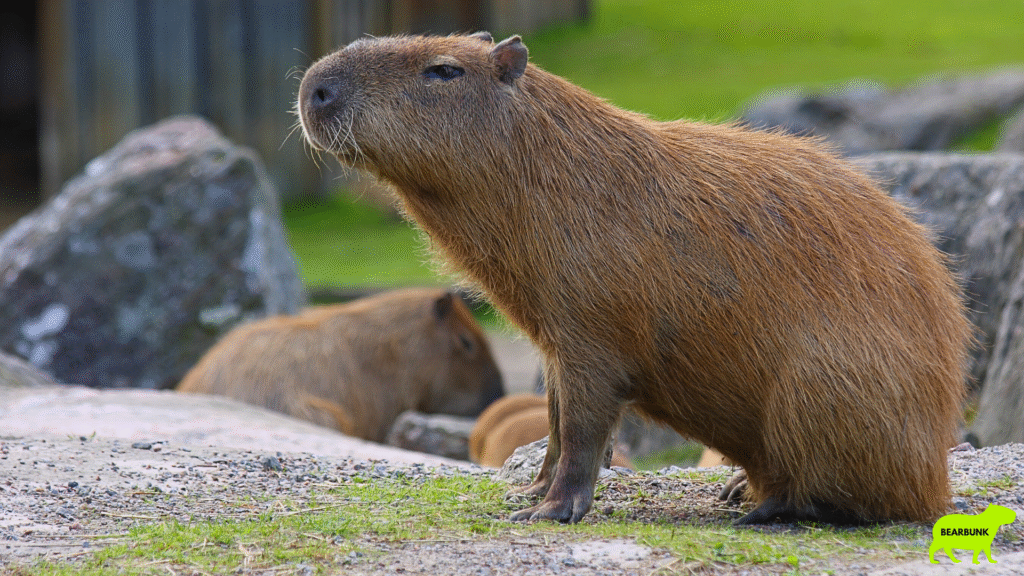
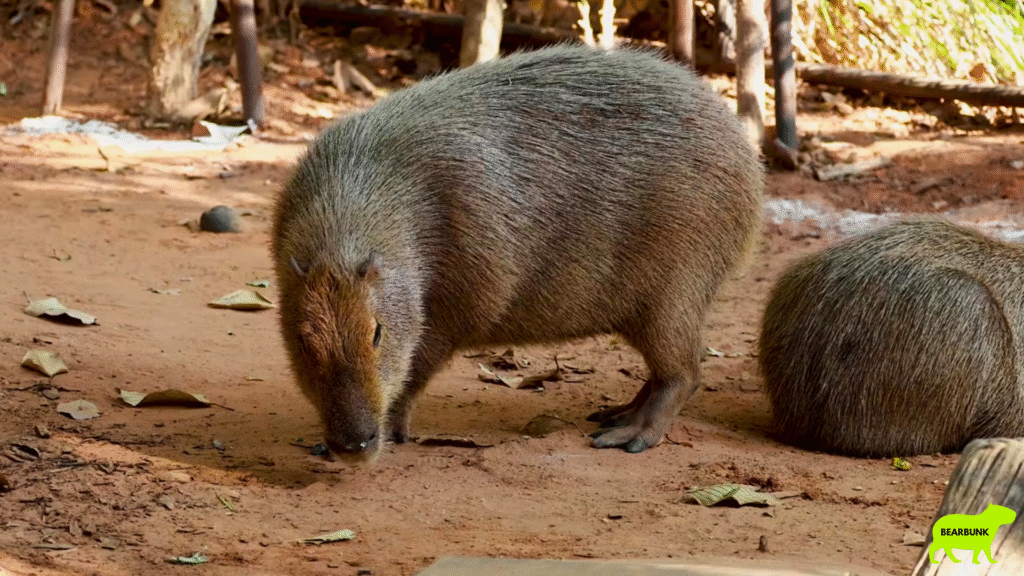
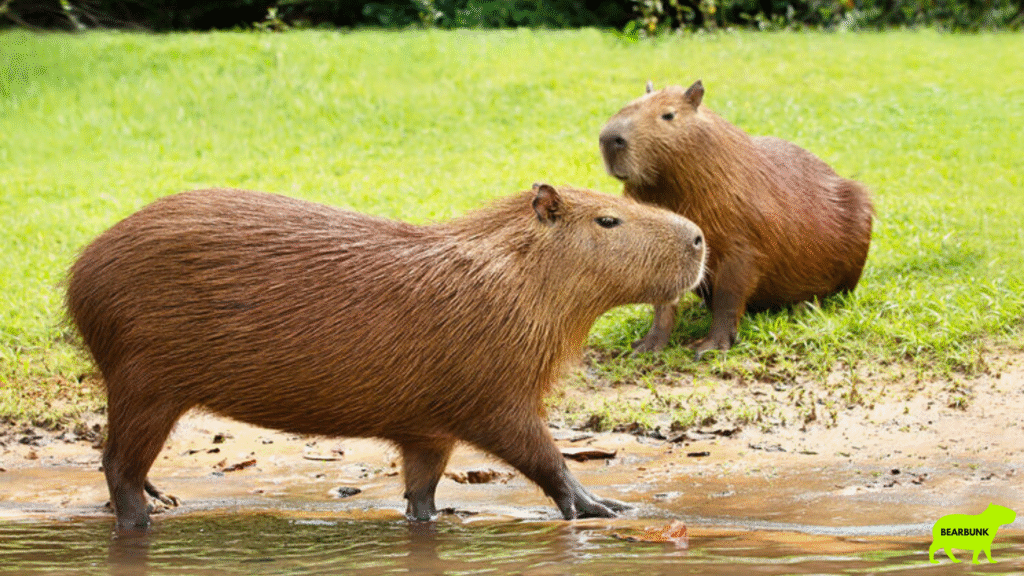
Capybara Subspecies
There are actually two species of capybara, though most people only know the common one. Both share the same easygoing nature and semi-aquatic lifestyle, but they differ slightly in size and range.
Common Capybara (Hydrochoerus hydrochaeris) — The larger and more widespread species, found across much of South America.
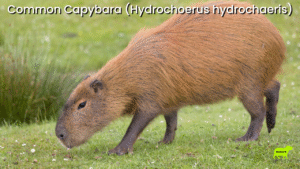
Lesser Capybara (Hydrochoerus isthmius) — A smaller, less common species that lives in Panama and parts of northwestern South America. The lesser capybara is about 20% smaller than its cousin, with slightly darker fur and a shorter, rounder face. It shares the same semi-aquatic, social lifestyle as the common species, but is far less widespread.
Because of its limited range and rarity, nearly all photos and references people see are of the more widespread common capybara. Since the two species look so similar apart from size, we couldn’t find an image we could confidently identify as the lesser capybara.
While the lesser capybara is smaller and less widespread, both species share the same gentle, water-loving traits that make capybaras so fascinating.
Habitat
Capybaras are found throughout South America — in Brazil, Venezuela, Colombia, Argentina, Peru, and beyond. They prefer wetlands, marshes, rivers, and lakes, always staying close to water. Their name even comes from the Tupi language of Brazil and translates roughly to “water pig.”
These habitats provide not only food but also safety. Capybaras are excellent swimmers and often escape predators by slipping underwater, where they can hold their breath for up to five minutes.
Diet
Capybaras are strict herbivores, grazing on grasses, aquatic plants, fruits, and bark. Their diet is high in fiber but low in nutrients, which means they spend much of the day eating to stay fueled.
Like rabbits and some other rodents, capybaras practice coprophagy — re-eating their own droppings to extract every last bit of nutrition. This may sound unpleasant to us, but it’s an essential survival strategy that allows them to thrive in their environment.
Share On Social:
Mating & Raising Young
Capybaras are highly social and live in groups of 10–20, though super-herds of up to 100 individuals have been observed. A dominant male leads each group, using his scent glands to mark territory and maintain order.
Females share responsibility for raising young. After a pregnancy of about 150 days, mothers give birth to litters of 4–5 babies, though as many as 8 are possible. Amazingly, the babies are born fully furred, with open eyes, and able to graze within hours — though they still nurse for several weeks.
This cooperative style of parenting helps ensure the survival of the young in the wild.
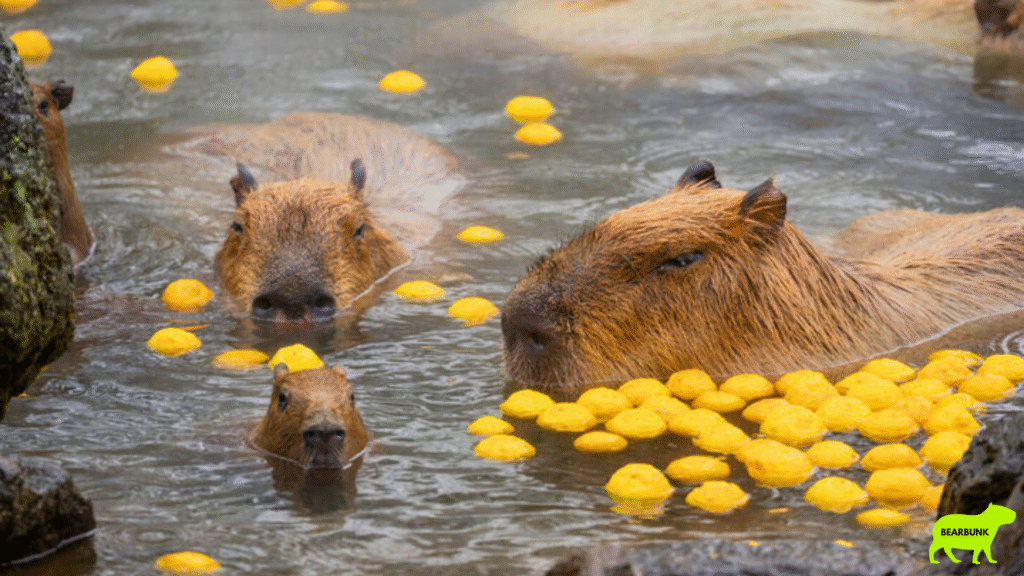
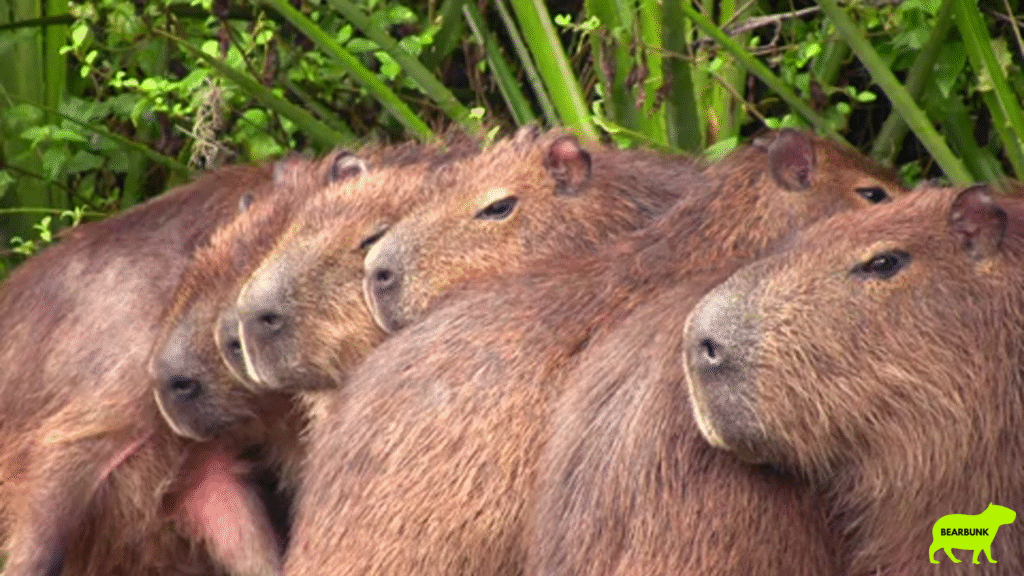
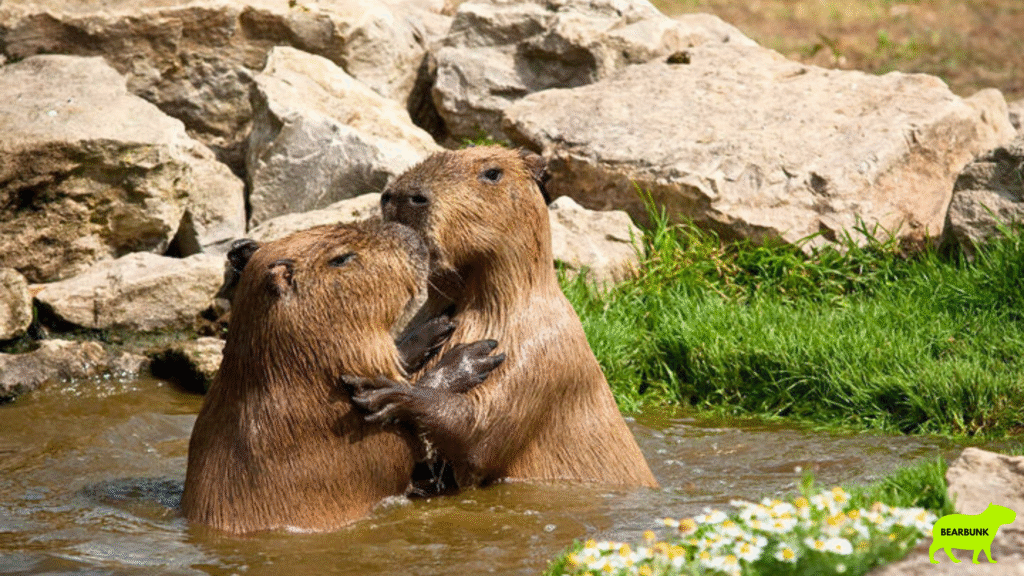
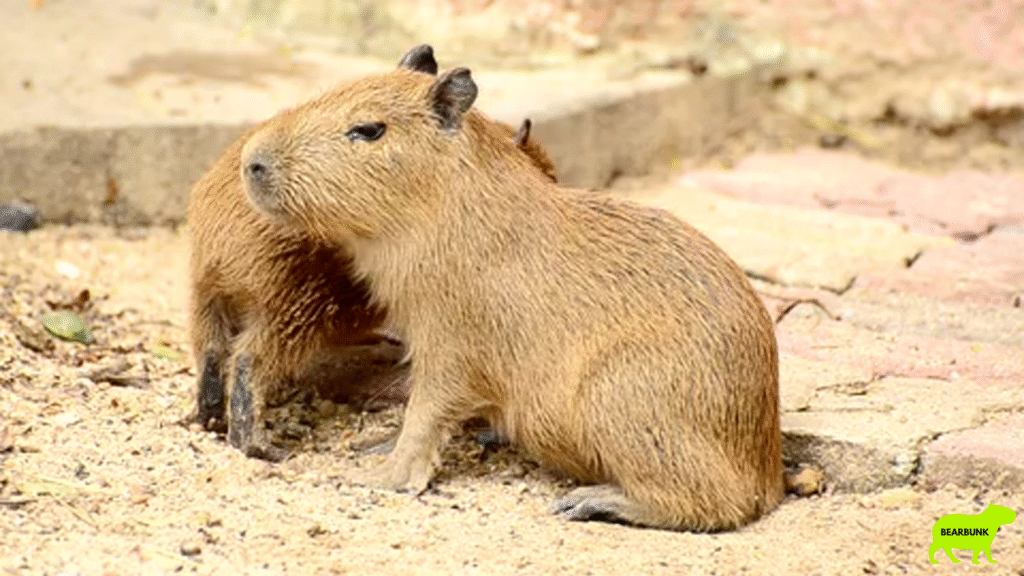
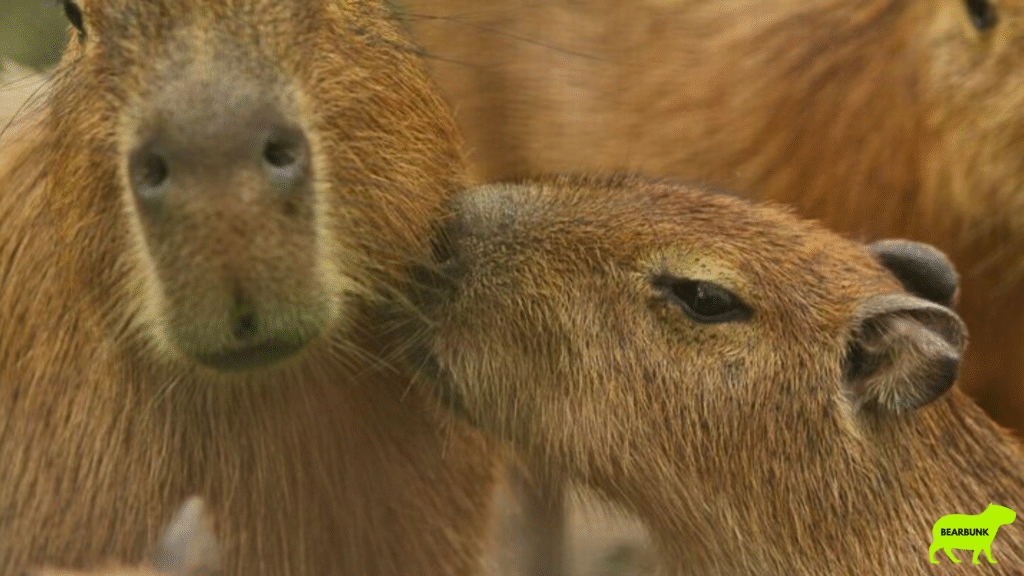
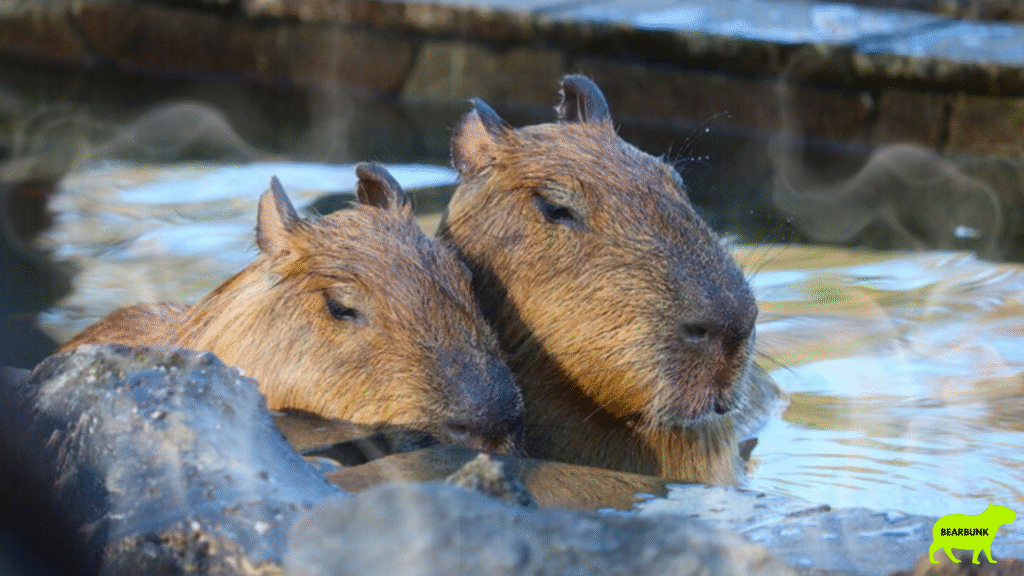
Size, Speed, and Lifespan
- Length: 3.3–4.4 ft (1.0–1.34 m)
- Height at shoulder: 20–24 in (50–62 cm)
- Weight: 77–150 lb (35–68 kg)
- Top speed: up to 22 mph (35 km/h)
- Lifespan: 8–10 years in the wild (up to ~12 in human care)
Fun Facts
- Capybaras use mud as sunscreen, coating their bodies to keep cool in the hot sun.
- They communicate with a variety of sounds, including barks, whistles, grunts, and even purrs.
- In Japan, capybaras are famous for soaking in outdoor hot springs during winter, delighting crowds of visitors.
- Despite their bulky appearance, they can run surprisingly fast — up to 22 mph on land.
- Their fur is coarse and dries quickly, while their barrel-shaped bodies provide buoyancy in water.
About Capybaras
Scientific Family: Caviidae
Number of Species: 2 (Common & Lesser)
Habitat: Wetlands, rivers, marshes, and lakes of South America
Diet: Herbivore — grasses, aquatic plants, fruits, bark
Lifespan: 8–10 years in the wild (up to ~12 in human care)
Unique Traits: Semi-aquatic with webbed feet, continuously growing teeth, mud as sunscreen, social communication with clicks & whistles
Social Structure: Groups of 10–20, sometimes up to 100, led by a dominant male
Fun Fact: In Japan, capybaras are famous for soaking in hot springs during the winter!
Why We Love Them
Capybaras embody a slower, more peaceful way of life. They remind us to relax, stay social, and enjoy simple pleasures like a cool swim or a patch of fresh grass. With their quirky habits, adorable babies, and laid-back charm, it’s no wonder they’ve earned a reputation as nature’s most lovable rodent.
Conclusion
From their homes in South America’s wetlands to their unexpected fame in Japan, capybaras are more than just the world’s largest rodents — they’re a global symbol of gentleness, adaptability, and calm. Whether lounging in a hot spring, munching on grasses, or bonding with other animals, capybaras continue to fascinate and inspire people everywhere.
🦎💚 Stay curious — and keep exploring more amazing animals right here at BearBunk
Did you learn something new? Share this post to your favorite board or group and help others fall in love with the wild world of reptiles.
Watch the Video on YouTube:
Hooves on the Savanna Africa’s Mighty Desert Survivor – The Gemsbok
Learn more about:
Mammals, South American Wildlife – Animals of the Amazon, & Beyond, Rodents and Rabbits, Wetlands and Marshes, and Fast Animals
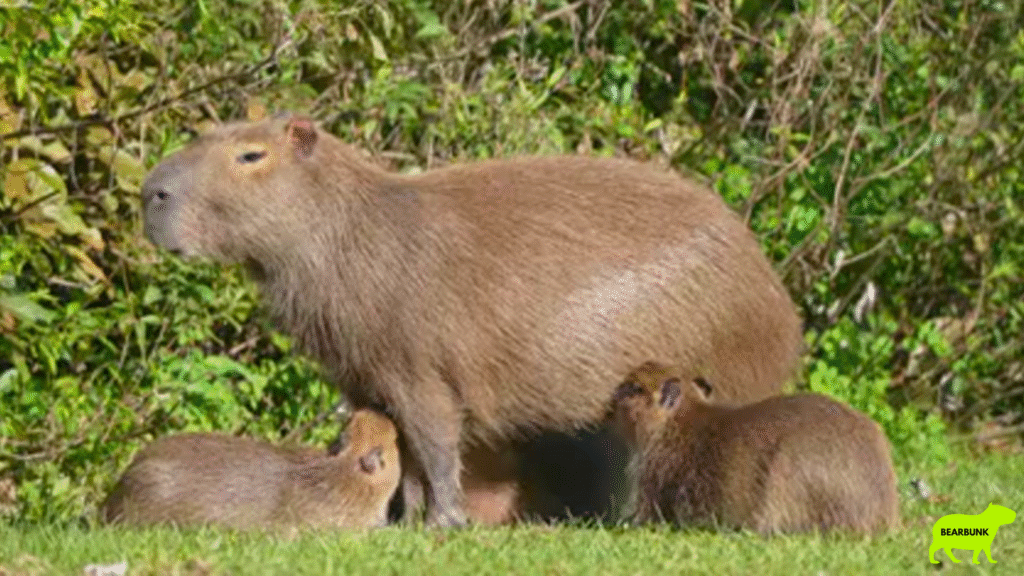
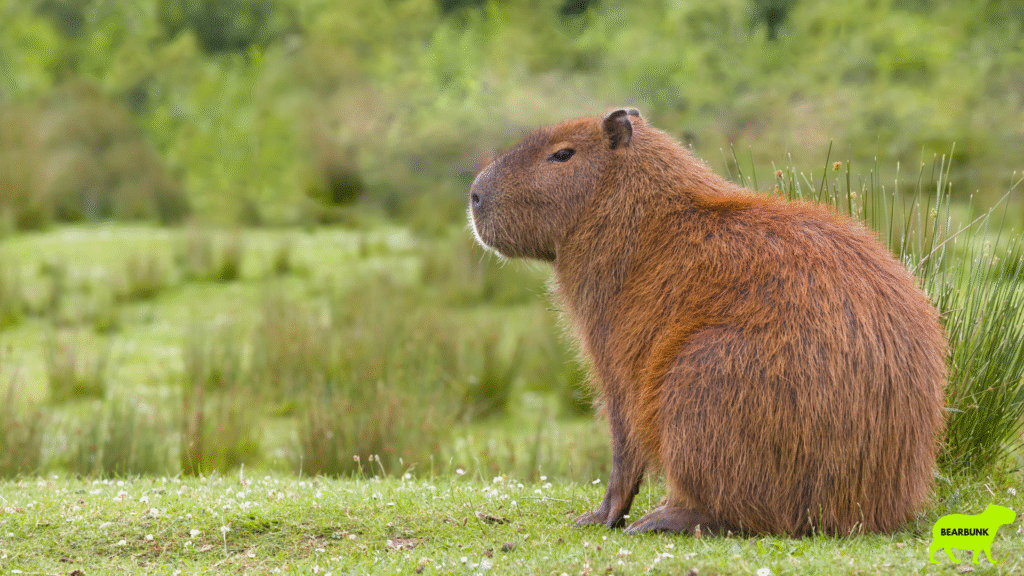
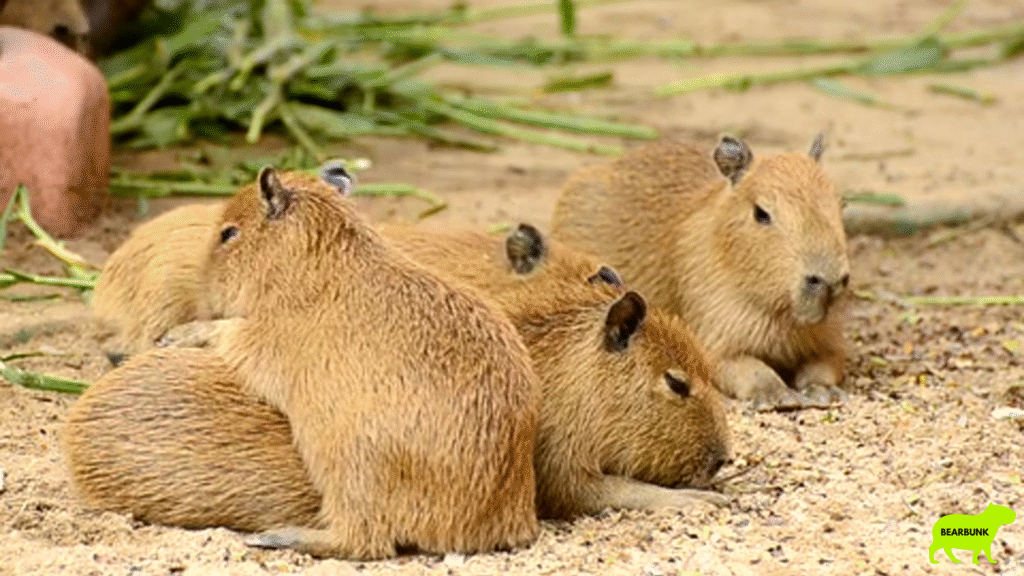
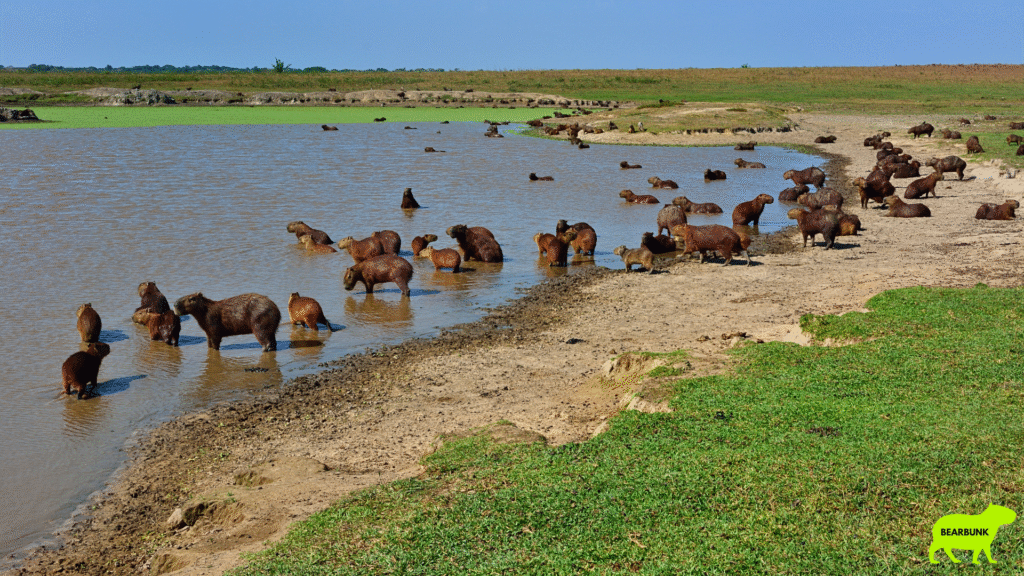
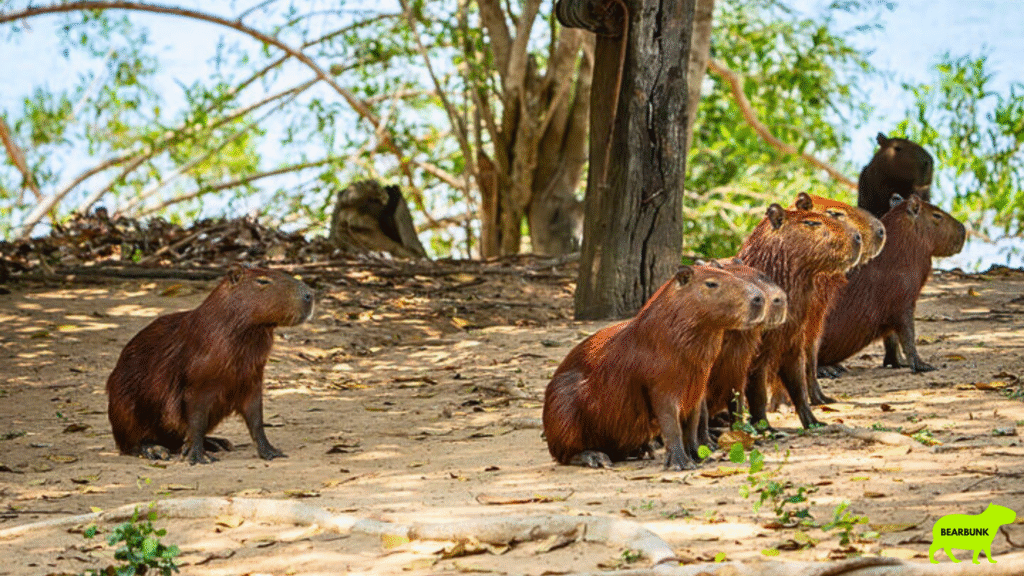
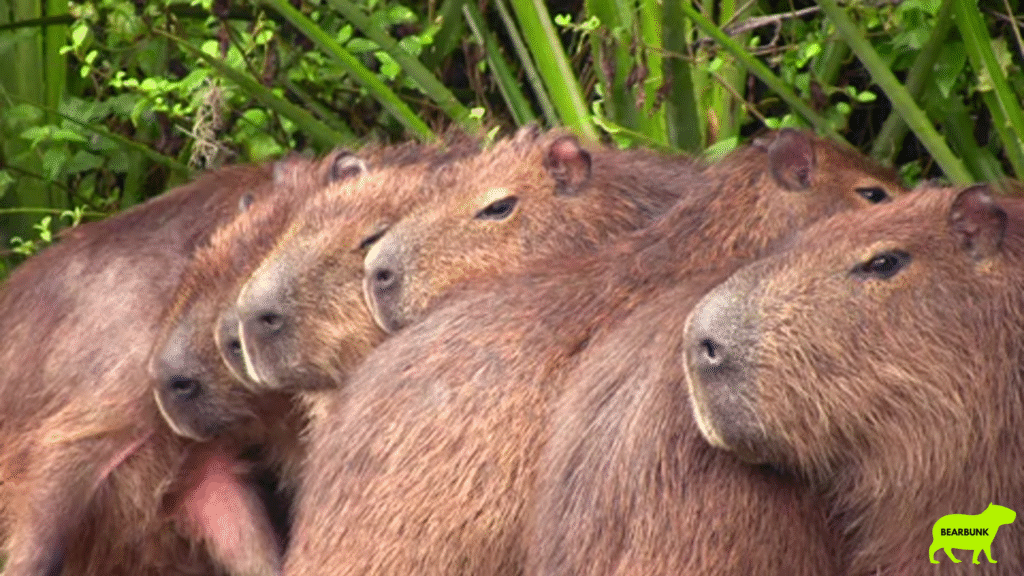
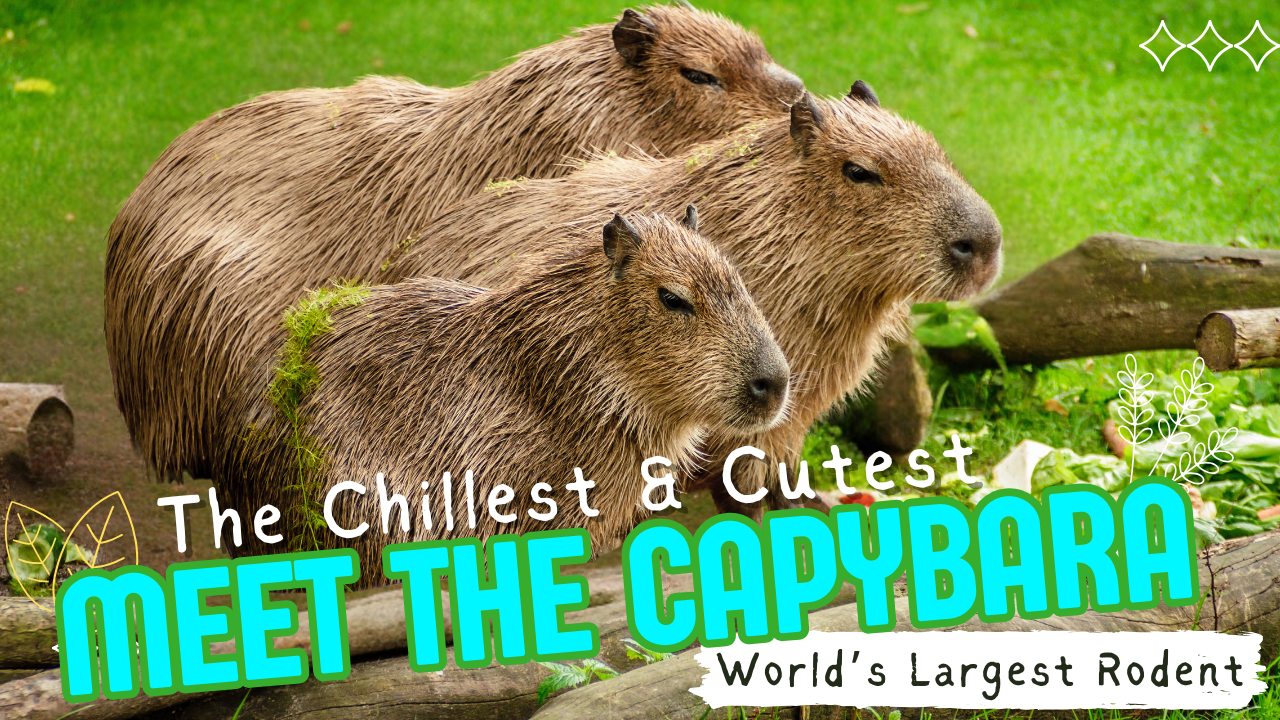
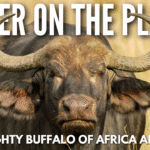




Leave a Reply